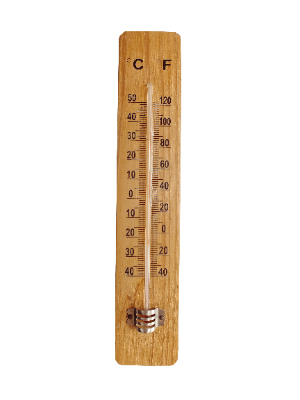What Is a Thermometer?

A thermometer is an instrument that can measure the temperature of an object. Commonly used thermometer includes glass thermometer, bimetallic thermometer, and radiation thermometer.
A glass thermometer is a thermometer with a glass tube filled with mercury or alcohol as a temperature-sensitive liquid. The accuracy varies depending on the glass used and the temperature-sensitive liquid. If you choose the right type for the object to be measured, you can perform measurements with a high degree of accuracy.
A bimetal thermometer is a type of contact thermometer that uses the expansion of metal. Although they are less accurate than glass thermometers, a bimetallic thermometer is more durable and can measure temperatures stably.
A radiation thermometer is a type of thermometer that can take measurements without directly touching an object and is becoming increasingly popular at manufacturing sites.
Uses of Thermometers
There are several types of thermometers with different specifications in terms of measurement methods and principles. Each type has its own characteristics and is often used, especially in industrial fields.
For example, thermometers can be used to detect heat generation in home appliances and electronic components. This can be used to detect abnormalities during product testing and inspections, making work more efficient than visual inspections.
Another typical application of thermometers is in factory production lines. By utilizing thermometers in food production lines to control temperatures during fermentation and roasting processes, quality can be easily maintained and improved.
Principle of Thermometers
The method of measuring temperature in thermometers varies from product to product. There are two main types of measurement methods: contact and non-contact, and the method differs depending on what is used as the standard for detecting the temperature of an object.
The contact method is a measurement method in which the measuring section of the thermometers is in direct contact with the solid, liquid, or gas (called the workpiece) to be measured. The temperature of the solid or liquid workpiece is measured by thermal conduction. The temperature of the gaseous workpiece is measured by convection. Most thermometers using this method are simple in construction and low in cost.
With the contact method, there is a possibility of loss of heat from the workpiece due to direct contact. This issue is solved by the non-contact method, which can measure temperatures without direct contact.
The non-contact method uses radiation from the solid or liquid workpiece to read the surface temperature, making it possible to perform measurements in a short time. However, since emissivity varies depending on the workpiece, emissivity must be set appropriately for accurate temperature measurement.